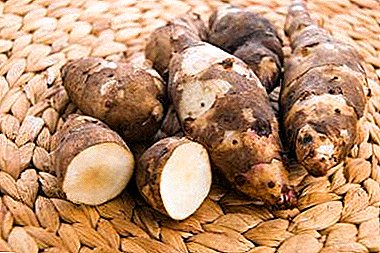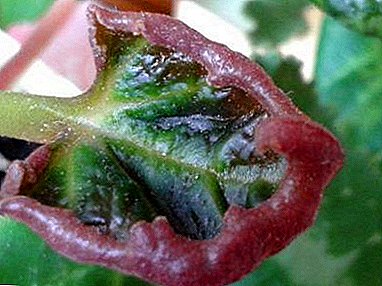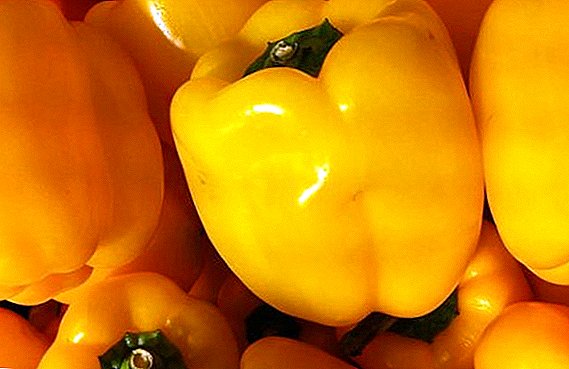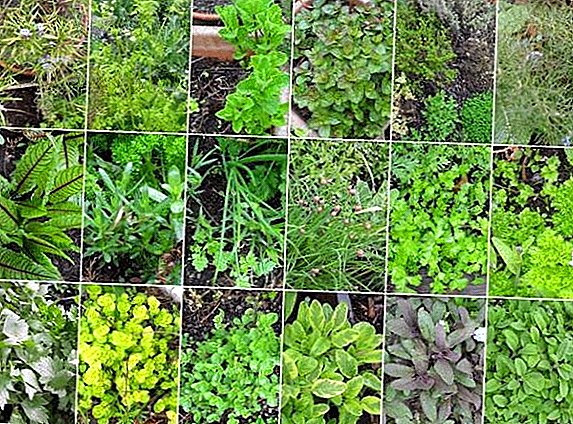 Nutritionists say: if you want to lose weight and keep fit - eat white meat. In terms of diet, beef and pork are noticeably inferior to chicken. First of all, it is much less fat, because of what it is easier to digest and less stored in stock. Also, white meat is an excellent source of protein, contains fat-soluble vitamins, minerals, amino acids. Due to this composition, it turns out not only tasty, but also useful.
Nutritionists say: if you want to lose weight and keep fit - eat white meat. In terms of diet, beef and pork are noticeably inferior to chicken. First of all, it is much less fat, because of what it is easier to digest and less stored in stock. Also, white meat is an excellent source of protein, contains fat-soluble vitamins, minerals, amino acids. Due to this composition, it turns out not only tasty, but also useful.
Composition
First, let's look at the composition of the product. The data below is taken from the USDA Nutrient Database (US Food Database).
The nutritional value
Nutritional value of 100 g of raw white meat:
- water - 73 g (3% nutrient);
- proteins - 23.6 g (39% nutrient);
- fats - 1.9 g (3% nutrient);
- carbohydrates - 0.4 g (0.2% nutrient);
- ash - 1.1 g

The content of the nutrient indicates what part of the daily requirement for the average person it is.
Vitamins
- Vitamin A (retinol) - 8 mg.
- Vitamin B1 (thiamine) - 0.068 mg.
- Vitamin B2 (riboflavin) - 0.092 mg.
- Niacin (vitamin B3 or PP) - 10,604 mg.
- Vitamin B5 (pantothenic acid) - 0.822 mg.
- Vitamin B6 (pyridoxine) - 0.54 mg.
- Folic acid (vitamin B9) - 4 micrograms.
- Vitamin B12 (cyanocobalamin) - 0.38 mcg.
- Vitamin E (tocopherol) - 0.22 mg.
- Choline (vitamin B4) - 65 mg.
- Vitamin K (phylloquinone) - 2.4 micrograms.

Minerals
Macro elements:
- potassium - 239 mg;
- calcium - 12 mg;
- magnesium - 27 mg;
- Sodium 68 mg;
- phosphorus - 187 mg.
Did you know? In the famous Georgian dish "tobacco chicken", the word tobacco does not refer to the name of the famous plant. It is associated with the name of the pan (tapa, tapak), on which the dish is prepared.
Trace elements:
- iron - 0.73 mg;
- manganese - 18 mcg;
- copper - 40 mcg;
- Zinc - 0.97 mg;
- selenium - 17.8 mcg.

Amino Acids
Irreplaceable:
- Arginine - 1.82 g (immunomodulator, cardiological, anti-burn agent, stimulates muscle growth, burns fat, rejuvenates the body).
- Valin - 1.3 g (participates in the growth and synthesis of body tissues, is a source of energy for muscles, does not allow to decrease the level of serotonin, improves muscle coordination, dulls the sensation of pain, cold, heat).
- Histidine - 1.32 g (activates the growth and restoration of tissues, is a component of hemoglobin, helps to treat rheumatoid arthritis, ulcers, anemia).
- Isoleucine - 1.13 g (takes part in energy metabolism, a source of energy for muscles, helps to restore muscle tissue, normalizes glucose levels, facilitates the course of menopause).
- Leucine - 1.98 g (helps with liver problems, anemia, lowers sugar, a source of energy for cells, strengthens the immune system, accelerates wound healing, takes part in the growth and development of muscle tissue).
- Lysine - 2.64 g (has antiviral effect, prevents vascular occlusion, helps to absorb calcium, supports the gallbladder, activates the work of the epiphysis and mammary glands).
- Methionine - 0.45 g (reduces the amount of cholesterol, prevents the deposition of fat in the liver and improves the functioning of the body, a light anti-depressant, increases the protective ability of the mucous membrane of the stomach and duodenum, helps tighten ulcers, erosions in the stomach).
- Methionine and cysteine - 0.87 g (compensate for the lack of vitamin B, help with diabetes, anemia, fight acne).
- Threonine - 1.11 g (activates the immune system, participates in the metabolism of fats, promotes the production of antibodies, supports the growth of the muscular skeleton, the synthesis of immune proteins).
- Tryptophan - 0.38 g (antidepressant, normalizes sleep, eliminates the feeling of fear, facilitates the course of PMS).
- Phenylalanine - 1.06 g (sweetener, stabilizes protein structure, participates in protein synthesis).

Replaceable:
- Aspartic acid - 1.94 g (part of the protein, is a neurotransmitter, is involved in the metabolism of nitrogenous substances).
- Alanine - 1.3 g (component of proteins and biologically active compounds, is involved in the production of glucose, supports the immune system, prevents the formation of kidney stones, facilitates the course of menopause, improves the physical endurance of the body).
- Hydroxyproline - 0.21 g (being a part of collagen, it is responsible for the condition of the skin and muscle tissue, also stimulates wound healing, bone growth, acts as an analgesic, facilitates PMS, removes toxins from the body, improves gastrointestinal motility).
- Glycine - 0.92 g (sedative, antidepressant, anti-stress agent, improves memory and performance, regulates metabolism).
- Glutamic acid - 2.83 g (used for problems with the nervous system as a psychostimulant and nootrope).
- Proline - 1.01 g (necessary for the growth of cartilage and skin tissue, normalizes the structure of the skin, takes part in the production of collagen, helps to heal wounds and acne).
- Serine - 1.01 g (supports the work of the brain and nervous system, together with glycine, normalizes the level of sugar, participates in the production of other amino acids).
- Tyrosine - 0.9 g (improves mood and improves attentiveness, helps the body to cope with stressful situations, gives vitality).
- Cysteine - 0.43 g (strengthens the immune system, takes part in the formation of T-lymphocytes, restores the gastric mucosa, removes alcohol and nicotine toxins, protects against radiation).

Calorie content
Chicken meat is dietary, as it contains only 2.5-13.1% of fat.
To the diet also include meat turkey, guinea fowl, indouki, rabbit.
Such a large variation is explained by the fact that the fat content of each part of the carcass is different. In addition, the calorie content of the product varies depending on the method of cooking meat.
Caloric content of a whole carcass (per 100 g of product):
- homemade chicken - 195.09 kcal;
- broiler - 219 kcal;
- Chicken - 201 kcal.
Did you know? In Japan, there is a dish called torisashi. Raw chicken is sliced and served in sashimi style.
Calorie content of different parts of chicken (per 100 g of product):
- calf - 177.77 kcal;
- chicken leg - 181.73 kcal;
- thigh - 181.28 kcal;
- carbonate - 190 kcal;
- fillet - 124.20 kcal;
- breast - 115.77 kcal;
- neck - 166.55 kcal;
- wings - 198,51 kcal;
- feet - 130 kcal;
- backs - 319 kcal.

Calories in offal (per 100 g of product):
- liver - 142.75 kcal;
- heart - 160.33 kcal;
- navels - 114.76 kcal;
- stomachs - 127.35;
- skin - 206.80 kcal.
Calorie chicken, cooked in different ways (per 100 g of product):
- raw - 191.09 kcal;
- boiled - 166.83 kcal;
- boiled breast without skin - 241 kcal;
- fried - 228.75 kcal;
- stew - 169.83 kcal;
- smoked - 184 kcal;
- grill - 183.78 kcal;
- baked in the oven - 244.66 kcal;
- chicken fillet broth - 15 kcal;
- minced meat - 143 kcal.

Beneficial features
Useful properties of white meat:
- improves thyroid function;
To improve the functioning of the thyroid gland, it is recommended to use persimmon, black beans, honeysuckle, sweet cherry, spinach, fresh green peas.
- antidepressant;
- prophylactic agent for anemia;
- supports the immune system;
- has a beneficial effect on reproductive functions;
- improves brain function;
- source of elements necessary for visual acuity;
- improves the condition of the skin;
- strengthens bone and muscle tissue;
- lowers cholesterol;
- stabilizes blood pressure;
- lowers sugar levels;
- energy source for the whole body;
- normalizes metabolic processes.

Recommended to eat
Chicken is good for everyone. But in some situations it is necessary to make it the main element of your diet.
Important! The benefits will be noticeable if you use the product in moderation. Overeating will lead to gastric problems.
Those who often catch cold
Proteins in the human body support the production of antibodies, digestive enzymes, support the bactericidal activity of blood serum. Therefore, for a sick body, this organic matter is extremely necessary.
And one of the best sources of animal protein is chicken. Its proteins are absorbed by the body the easiest.
The best chicken medicine is broth. 
It envelops the stomach, protecting it from the negative effects of antibiotics, softens mucus, thereby facilitating its removal from the bronchi, normalizes the water-salt balance in the body.
It is also a source of macro-and micronutrients needed to restore the protective functions of the body.
For children
White meat is rich in vitamins, minerals and amino acids necessary for the normal development of the child. So, vitamin B2 regulates the nervous system.
For the regulation of the nervous system is also recommended to use the eggs of guinea fowl, green radish, hawthorn berries, nectarine.
Iron, which is in chicken, is easily absorbed by the child's body, which means that the risk of anemia is reduced.
Tryptophan, converting to serotonin, acts as a sedative and relaxing agent. 
Chicken meat is low in calories, which means it does not burden the growing body with excess fat. It also contains easily digestible proteins.
Diabetics
The main thing for diabetics when eating foods is to monitor their glycemic index (an indicator of the effect of the product on sugar levels). Chicken has a zero index.
In addition, you need to regulate the consumption of calories. In white meat their minimum amount, compared with other types of meat.
Chicken meat also contains minimal cholesterol, which is harmful for type 2 diabetics, often suffering from overweight. 
To old people
Chicken meat can normalize blood pressure and the cardiovascular system, thereby reducing the risk of atherosclerosis, heart attack and stroke.
To normalize blood pressure, it is also recommended to use mushrooms, apricots, sunberry, chumizu, basil, oats decoction.
Beneficial effect on metabolic processes, lowers cholesterol.
Pregnant and lactating women
Chicken is a source of essential amino acids that are necessary for the formation of fetal bone and muscle tissue. She is also rich in vitamins and minerals, which are also essential for a young mother and child.
The iron contained in meat is easily absorbed by the body. This element is necessary to maintain the level of hemoglobin, which is responsible for the transport of oxygen, without which all organs cannot function normally.
It also supports the work of the nervous system, protects the pregnant woman's body from unnecessary stress, supports the immune system of a nursing mother. 
Athletes
Athletes for building muscle mass requires protein with a minimum of fat and carbohydrates. All this is inherent in chicken meat. It is also a source of niacin, which controls cholesterol levels.
Vitamin B6 converts glycogen to muscle energy. Selenium is an important element in the biochemical reaction of the synthesis of thyroid hormones - they normalize metabolic processes. Zinc controls anabolic hormone levels. Choline makes the body more resilient, increases physical strength.
Important! Chicken meat may be contraindicated people who suffer from protein digestibility. This applies to all kinds of it. The rest it may be contraindicatedonly fried and smoked.
Harmful properties and contraindications
- In the chicken, only the skin can be harmful, since it is very oily.
- Poultry meat is most useful, as the store is often stuffed with antibiotics and growth hormones that cause so much harm to the human body that the benefits of meat do not compensate for it.
- Chicken can be processed poorly, which is why there is a risk of being infected with harmful bacteria. Therefore, it is necessary to subject this product to thorough heat treatment.
- Abuse of fried and smoked chicken can increase cholesterol levels.

How to choose chicken meat
- In a chicken carcass, the breast should be round, and the keel bone should not stick out.
- In a young carcass, the brisket is springy.
- Pieces of chicken should be proportionate. If the breast is larger than the limbs, it means that the bird was raised on hormones.
- On the carcass should not show defects (fractures, cuts, bruises).
- If the meat is fresh, then when pressed in a soft area, it immediately takes the same shape.
- The meat of young chickens has a light pink color. The skin is tender and pale. Fat pale yellow. Feet covered with small scales.
- Fresh meat will never smell sour, rotten and damp.
- In fresh carcass skin is dry and clean. Tackiness and slipperiness indicate that meat is not stale or that antibiotics are used to treat poultry.
- Choose chilled, not frozen meat. It will be more gentle and juicy.
- The packaging in which the product is sold must not be damaged. The presence of pink ice crystals is also unacceptable. This suggests that the meat was frozen again.

So, chicken meat is very useful for our body and must be present in the diet. However, you need to carefully monitor the quality of the product and try to buy poultry.
In this case, there is confidence that the chicken fed on natural food, there was enough time in the fresh air and hormones were not used for its growth.












